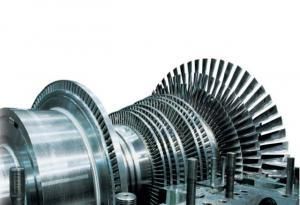Impact of low load operation on steam plant lifetime

A paper on this topic was presented by Jan Vogt, Thomas Schaaf, Hongtao Sun and Klaus Helbig of Alstom Power. Below are excerpts from the paper:
In the past steam turbines were designed to operate on a certain load level. However, plant operators are often forced to operate their steam turbines on various load levels depending on the fluctuating demand of the grid.
Due to the influence of renewable energies on the electricity market, these fluctuations significantly increased in the last decade. One possibility to increase a plant’s flexibility and adapt to these altered conditions is to operate it in low load during periods of reduced electricity demand, instead of shutting the plant down. Doing so, the plant can provide power very quickly, if demanded from the grid and it saves the costs for start-up.
The demand for operational flexibility of existing power plants significantly increased in the last decade. Due to the fluctuating demand from the grid and the fluctuating feed from renewable energies which were strongly expanded in the last years, conventional power plants are forced to adapt their power output.
Therefore, many plants need to shut down during periods of low electricity demand and high feed-in from renewable energies. However, they must be available for periods with high electricity demand. Depending on the type of plant, this leads to more frequent shutdowns and shorter periods of operation during which the nominal power output is not always reached, and thus less electric energy can be sold.
On the other hand, a profitable business can only be gained, if the costs (e.g. fuel costs, maintenance costs) for starting up the plant are covered by the electricity sold during the period of operation. One option instead of shutting down the plant is to operate it in low load. This means that the power output is minimized by reducing the heat input in the steam generator to a minimum level at which a safe stationary operation can still be guaranteed.
Increasing operational flexibility
For plants that are not used as base load machines, measures to increase the operational flexibility e.g. a reduction of start-up times or improving the LLO capability can be implemented in order to enhance the commercial viability. However, due to the strong deviation of LLO from the way the plant was meant to operate, when it was designed, several issues concerning steam generator and steam turbine must be resolved during enhancement of LLO capability.
However, like all transient events, the transition to Low Load Operation (LLO) can cause temperature differences in the rotor and thick-walled components resulting in deformations and thermal stresses which increase the lifetime consumption of the turbine or might even damage the turbine. Since LLO was mostly only a secondary criterion in the design of the turbine and installed turbine protection systems (e.g. stress controllers) do not offer sufficient protection in many cases, the possible risks of LLO should be investigated before the implementation of LLO for a plant.
Test runs and investigations
Test runs in LLO (down to 15 percent of nominal load) performed by a hard-coal fired plant are investigated. In a first step the thermal stresses occurring in the rotor during transition to LLO were evaluated. Therefore, the rotor was modeled with Finite-Element-Method and the thermal boundary conditions during transient operation were derived from measurement data recorded during the test runs. The influence of these additional stress cycles on the overall lifetime consumption was analyzed. In a second step operation data was examined with regard to critical operation regimes (e.g. elevated temperatures at HP and IP outlet caused by windage effects).
The results showed that certain components can be exposed to increased lifetime consumption during a start-stop cycle containing LLO phases. Moreover, the analysis of operation data indicated that a close monitoring of steam temperatures and pressures is necessary to avoid operation in critical regimes which might cause damage to turbine components
It has been highlighted, that damage caused by LLO cannot be neglected if it is planned to be operated frequently. Presented results show that the influence of LLO on the damage highly depends on the transient operation to reach LL and full load again on the one hand, and on start-up/shut-down cycle on the other hand. However, it can be beneficial from the lifetime aspect, to operate in LL instead of shutting the plant down and starting it up again. LLO should never be calculated independently from the surrounding start-up and shut-down cycle.